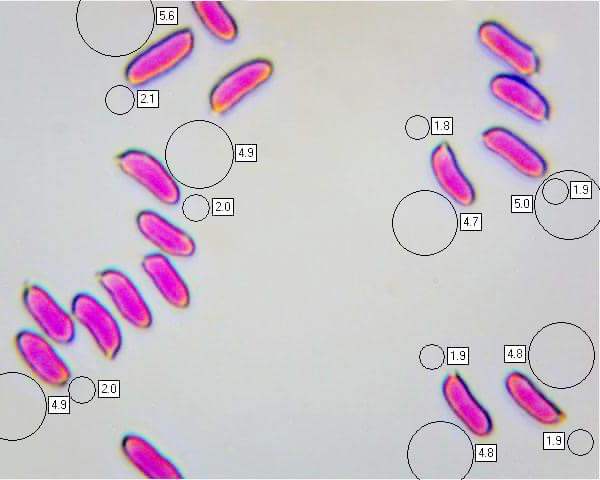Trametes versicolor (L.) Pilát - Turkeytail
Phylum: Basidiomycota - Class: Agaricomycetes - Order: Polyporales - Family: Polyporaceae
Distribution - Taxonomic History - Etymology - Identification - Culinary Notes - Reference Sources
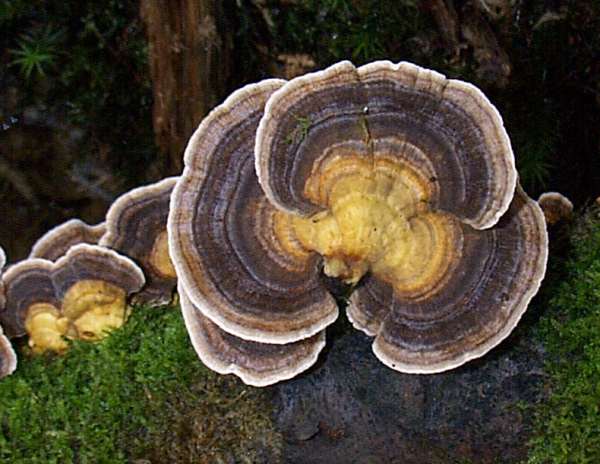
Trametes versicolor, Turkeytail fungus (formerly known as the Many-Zoned Polypore) can be found all through the year, but it is most obvious in the winter months when deciduous trees are bare. This very variable fungus grows mainly on dead hardwood, including stumps and standing dead trees as well as fallen branches. Some specimens are strikingly vivid in their colouring.
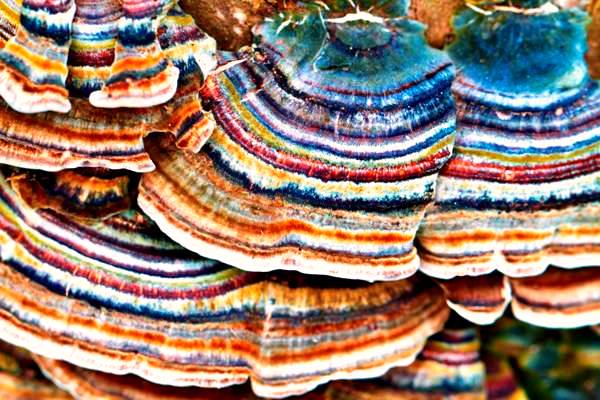
Although Trametes versicolor is tough and therefore inedible, because of its many colour forms it makes very attractive table decorations.
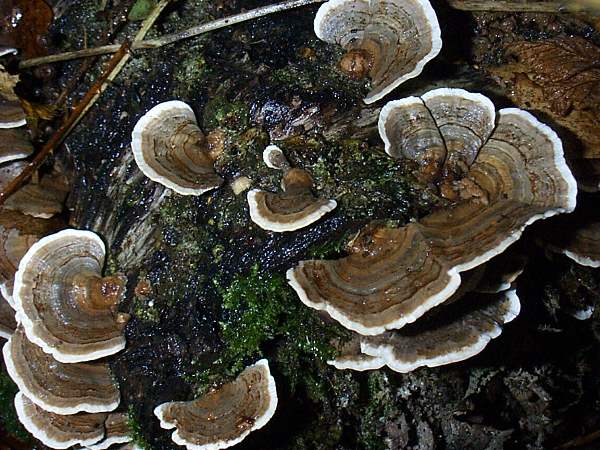
Distribution
Very common and widespread across Britain and Ireland, Turkeytail fungus occurs also throughout mainland Europe, from northern Scandinavia right down to the Mediterranean region. This wood-rotting fungus is also found in Asia and is very common in North America.
It is from the USA that the common name Turkeytail (sometimes written Turkey Tail) originated and in Britain and Ireland has now largely replaced the formerly popular English common name Many-zoned Polypore.
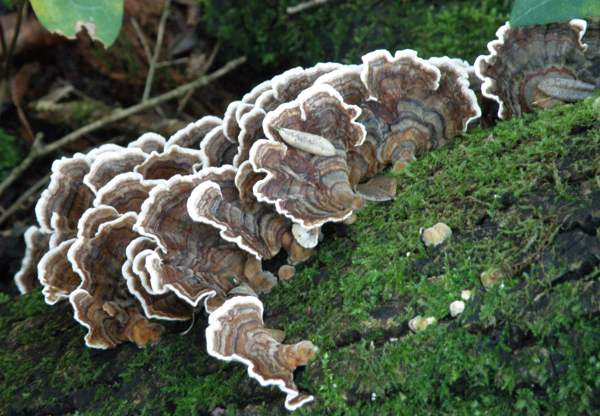
Taxonomic history
Originally described in 1753 by Carl Linnaeus, who gave it the binomial name Boletus versicolor, it was as recently as 1939 that this species was renamed Trametes versicolor by the Czech mycologist Albert Pilát (1903 - 1974).
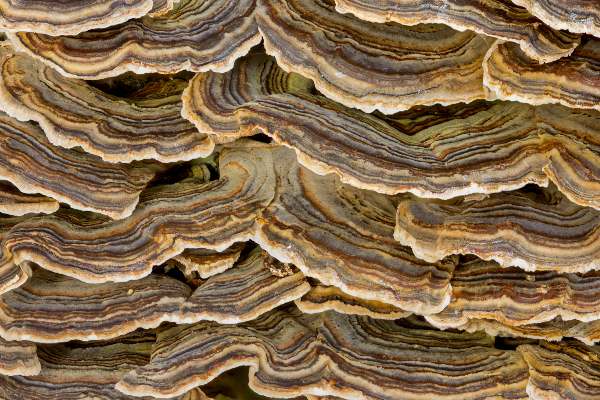
Synonyms of Trametes versicolor are many and include Boletus versicolor L., Poria versicolor (L.) Scop., Agaricus versicolor (L.) Lam., Polyporus fuscatus Fr., Polyporus versicolor (L.) Fr., Polystictus azureus Fr., Polyporus nigricans Lasch, Coriolus versicolor (L.) Quél., and Polystictus versicolor (L.) Cooke.
Etymology
Trametes, the genus name, comes from the prefix tram- meaning thin and -etes meaning 'one whi is' - hence the implication is that fruitbodies of fungi in this genus are thin in section.
The specific epithet versicolor means 'of several colours', a descriptive name that is fully justified not only by the variability of colouring from specimen to specimen but also the presence of several colour bands on the upper surface of a single fruitbody.
The beautiful Turkeytail seen above was found at Long Hill, Mere, Wiltshire, UK, and photographed by Keving Smith, with whose kind permission it is shown here.
Identification guide
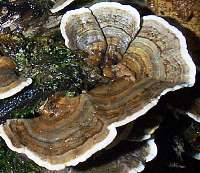 |
The wide range of colour variations of this attractive and durable fungus have given it many uses; at one time it was even used as a hat decoration. You may also see references to this species as Coriolus versicolor or as Polyporus versicolor. (At one time a great many of the bracket fungi were grouped under the genus Polyporus.) |
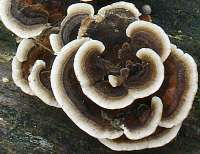 |
SizeCaps can be up to 10cm in diameter, and they frequently overlap in layers to form much larger compound fruiting masses. These brackets are 1 to 3mm thick. |
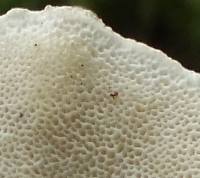 |
DescriptionWhile the upper surface comprises concentric zones of red, yellow, green, blue, brown, black and white, the underside, which is covered in tiny shallow pores spaced at 3 to 6 pores per mm, is white or cream. The pores do not stain significantly when bruised. |
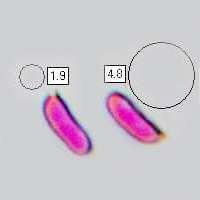 |
SporesCurved cylindrical (sausage-like!), smooth, 4-6 x 1.5-2.5µm; inamyloid. Spore printWhite. |
Odour/taste |
No distinctive smell or taste. |
Habitat & Ecological role |
This thin, leathery fungus attacks mainly dead wood, fallen or standing. It is most commonly found on hardwoods such as beech and oak, mainly as a saprobic (wood-rotting) fungus but sometimes as a weak parasite on living trees. |
Season |
These annual bracket fungi can be found all the year round, but they are at their best in autumn and winter, which is when they release their spores. |
Similar species |
Trametes suaveolens is a much paler bracket and does not usually grow in overlapping tiers. Several corticioid fungi (crusts) can produce zonate fruitbodies; among them are Stereum species, which differ from Trametes in having smooth spore-bearing undersides rather than having pores. See Stereum subtomentosum for example. |
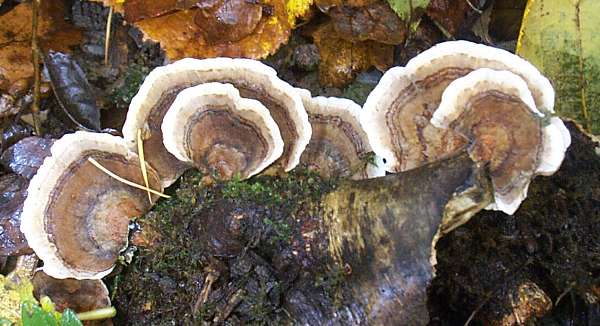
Culinary Notes
Although not generally reported as poisonous, these bracket fungi are far too tough to be considered edible. Turkeytail is used in Chinese medicine, however, and there are also scientific reports of its use in anti-cancer drug development.
Reference Sources
Fascinated by Fungi, 2nd Edition, Pat O'Reilly 2016, reprinted by Coch-y-bonddu Books in 2022.
BMS List of English Names for Fungi
Mattheck, C., and Weber, K. Manual of Wood Decays in Trees. Arboricultural Association 2003.
Dictionary of the Fungi; Paul M. Kirk, Paul F. Cannon, David W. Minter and J. A. Stalpers; CABI, 2008
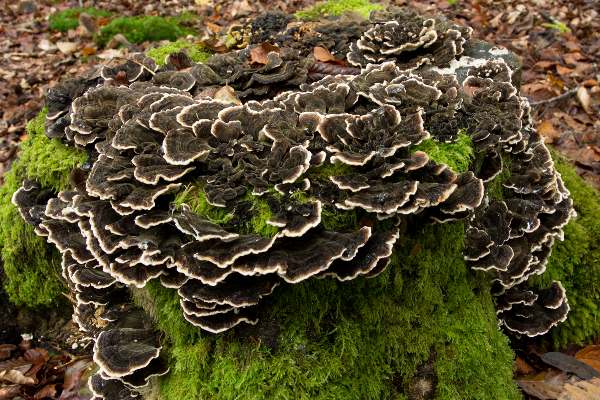
Taxonomic history and synonym information on these pages is drawn from many sources but in particular from the British Mycological Society's GB Checklist of Fungi.
Acknowledgements
This page includes pictures kindly contributed by Simon Harding, David Kelly and James Wainscoat.
Fascinated by Fungi. Back by popular demand, Pat O'Reilly's best-selling 450-page hardback book is available now. The latest second edition was republished with a sparkling new cover design in September 2022 by Coch-y-Bonddu Books. Full details and copies are available from the publisher's online bookshop...
